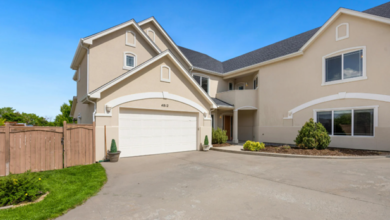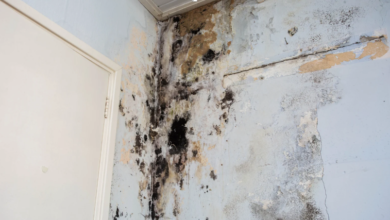what is a square in roofing

Table of Contents
Understanding Roof Squares in Roofing
When you’re talking about roofing, especially in places like Austin, you’ll hear the term “square” a lot. It’s not about the shape of the roof itself, but a measurement unit. A roofing square is simply a unit of area equal to 100 square feet. Think of it like a building block for calculating how much material you need. For example, if you’re looking into a new metal roof Austin, knowing the square footage of your roof is the first step.
Defining A Roofing Square
So, what exactly makes up a roofing square? It’s a straightforward concept: 100 square feet of roof surface. This measurement is used across the board, whether you’re installing asphalt shingles, tiles, or even a metal roof Austin. It’s the standard way roofers measure and price jobs. It doesn’t matter if the roof is flat or has a steep pitch; the area is calculated and then divided by 100 to get the number of squares.
Why Squares Matter For Estimating
Why do roofers use squares instead of just square feet? It really simplifies the estimating process. Imagine trying to calculate the exact number of shingles needed if you were working in square feet – it would be a mess! By using squares, material manufacturers and roofing companies can create consistent pricing and material lists. This makes it easier for everyone involved, from the homeowner to the crew on the roof. It’s a big reason why companies like Capital City Roofing can give you a clear estimate for your project.
Calculating The Number Of Squares
Figuring out the number of squares on your roof isn’t too complicated, though it can get tricky with complex shapes. For a simple, rectangular roof, you’d measure the length and width of each side, multiply them to get the square footage, and then divide by 100. However, most roofs have slopes, hips, valleys, and other features. Roofers use specialized tools and techniques to measure these accurately. They account for the pitch and any extra areas that need covering. For instance, a roof that’s 30 feet wide and 40 feet long on one side would be 1200 square feet, which equals 12 squares. But if there’s another side or a dormer, that gets added in. It’s a bit like putting together a puzzle to get the total area.
Materials Needed Per Square
When you’re figuring out how much roofing material you’ll need, thinking in “squares” makes things a lot easier. A roofing square is just a unit of measurement, specifically 100 square feet of roof area. So, if your roof measures 2,000 square feet, you’ve got 20 squares to cover. This is super handy for ordering supplies.
Shingle Requirements
For a standard asphalt shingle roof, you’ll typically need about three bundles of shingles per square. This can vary a bit depending on the shingle type and the complexity of your roof, like if you have a lot of hips and valleys. For a metal roof Austin project, the material needs are calculated differently, often by linear foot or by panel size, but the concept of covering a certain area still applies. Capital City Roofing always makes sure you have the right amount of shingles, plus a little extra for waste.
Underlayment Calculations
Underlayment, like felt paper or synthetic underlayment, is also measured per square. You’ll generally need one roll of standard 100 sq. ft. underlayment for each roofing square. Again, it’s wise to have a bit extra on hand. This layer is important for protecting the roof deck from moisture before the shingles go on.
Fastener Quantities
Nails are another big one. Most asphalt shingles require about four nails per shingle, and a square of shingles might use anywhere from 200 to 400 nails, depending on the manufacturer’s recommendations and local building codes. It’s easy to underestimate how many nails you’ll go through, so ordering a few extra pounds is a good idea. For metal roofing, different fasteners are used, often specialized screws with sealing washers.
It’s not just about the main roofing material. You also have to think about starter strips, ridge caps, and any special flashing needed for vents or chimneys. These extras are often calculated based on the linear footage of those specific roof features, not just the square footage of the main roof planes. Getting these details right is key to a long-lasting roof.
If you’re dealing with a roof leak repair Austin, understanding these material quantities can help you appreciate the scope of the work involved. Capital City Roofing can help you sort out all these material needs.
The Role Of Squares In Costing
When you’re figuring out the cost of a new roof, thinking in terms of squares is super helpful. It breaks down a big job into smaller, manageable pieces, making it easier to get a clear picture of what you’ll be spending.
Material Costs Per Square
Different roofing materials have different price tags per square. For instance, asphalt shingles are generally the most budget-friendly option. A standard square of asphalt shingles might cost anywhere from $80 to $150, depending on the quality and style. If you’re looking at something like a metal roof in Austin, the upfront cost per square will be higher, maybe $150 to $300 or even more for premium standing seam panels. This is where understanding the material cost per square really helps you compare apples to apples when looking at quotes from different companies, like Capital City Roofing.
Labor Costs Associated With Squares
The amount of labor needed is also often calculated per square. This makes sense because a larger roof area, meaning more squares, will naturally take more time and effort to install. Factors like the complexity of the roof shape, the pitch (how steep it is), and the type of material being installed all play a role in how much labor is charged per square. For example, installing a metal roof Austin might require more specialized labor than laying down asphalt shingles, which could affect the labor cost per square.
Impact On Overall Project Budget
By breaking down the total project cost into per-square figures for both materials and labor, you get a much clearer idea of your overall budget. If you know a standard square of your chosen material plus installation costs $X, and your roof is 25 squares, you can easily estimate the total. This method helps you budget more effectively and makes it easier to understand any price variations you might see in quotes. For homeowners dealing with a roof leak repair Austin, knowing these per-square costs can also help them understand the potential expense of a full replacement versus a localized repair.
Complex Roof Shapes And Squares
Roofing isn’t always as simple as a flat rectangle, is it? When you start dealing with more complicated roof designs, figuring out the square footage can get tricky. This is where understanding how squares work becomes really important for accurate estimates.
Accounting For Valleys And Ridges
Valleys are those V-shaped channels where two roof planes meet, and ridges are the peak lines where they also meet. Both areas require extra shingles and careful installation. For valleys, you’ll often cut shingles at an angle and overlap them to create a watertight seal. Ridges need special ridge cap shingles. When calculating squares, you have to account for the fact that these areas often use more material per linear foot than a standard roof slope. It’s not just about the flat area; it’s about the complexity.
Navigating Dormers And Skylights
Dormers and skylights break up the roof’s surface. Each one adds edges, angles, and penetrations that need flashing and extra material. Think of them as little roof islands. You measure the area around them, but you also have to consider the extra work and materials needed for the flashing and trim. For a company like Capital City Roofing, dealing with these features is part of the job, but it definitely adds to the total square count when you’re figuring out how much material to order.
Estimating Difficult Roof Geometries
Some roofs just have a lot going on – multiple hips, gables, and maybe even some odd angles. Calculating the squares for these can feel like a puzzle. You might have to break the roof down into smaller, more manageable sections, calculate the squares for each section, and then add them all up. It’s a bit like measuring a weirdly shaped room. You measure the main parts and then add in the nooks and crannies. For anyone worried about a roof leak repair in Austin, especially with a complex roof, getting a precise measurement is key. It’s also why people often look into options like a metal roof Austin, as sometimes the installation complexity can be managed differently with different materials.
When you’re looking at a roof that isn’t just a simple slope, remember that the ‘square’ is still your unit of measurement, but the way you get there changes. It involves more detailed measuring and thinking about all the little pieces that make up the whole roof.
When To Call Professionals For Roof Work
When it comes to your roof, sometimes it’s just better to call in the pros. Trying to tackle big roofing jobs yourself can end up costing you more in the long run, especially if you don’t have the right tools or experience. For instance, if you’re dealing with a persistent leak, getting prompt roof leak repair Austin is key to preventing further damage. Ignoring it can lead to rotten wood, mold, and even structural issues. Capital City Roofing knows how to spot these problems early.
Here’s why bringing in professionals makes sense:
- Safety First: Working on a roof is dangerous. Falls can happen easily, and serious injuries are a real risk. Professionals have the training and safety equipment to do the job right.
- Proper Materials: Whether you’re looking at traditional shingles or a modern metal roof Austin, knowing the right materials and how much you need per square is important. Contractors have access to bulk pricing and know what products hold up best.
- Warranty Protection: Many roofing materials and workmanship come with warranties. If you try to do it yourself, you might void these warranties, leaving you unprotected if something goes wrong.
Dealing with complex roof shapes, like those with multiple valleys or steep pitches, can be tricky. A small mistake in measuring or installing materials on these areas can lead to leaks down the road. It’s not just about covering the area; it’s about making sure every seam and edge is sealed correctly. This is where the experience of a company like Capital City Roofing really shines.
If you’re unsure about the condition of your roof or need a significant repair, especially if you’ve noticed signs of a leak, it’s time to get a professional inspection. They can assess the overall health of your roof, identify potential problems you might miss, and give you a clear picture of what needs to be done. This proactive approach can save you a lot of headaches and money.
So, What’s the Takeaway?
Alright, so we’ve talked about what a square means in the roofing world. It’s not about shapes, but about how much area your roof covers. Think of it as a standard way roofers measure things so everyone’s on the same page. Knowing this helps when you’re getting quotes or just trying to understand what your roofer is telling you. It’s a simple idea, really, just a way to count up all those square feet. Now you know, and hopefully, it makes talking about your roof a little less confusing.







